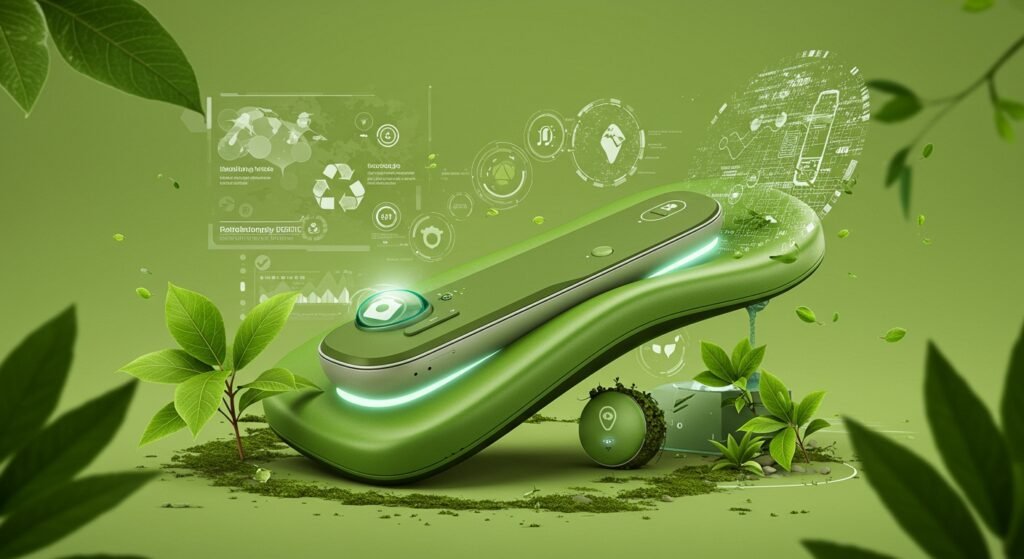Sustainability in Industrial Design: Pioneering a Greener Future
In an era where environmental concerns are paramount, Sustainability in Industrial Design has emerged as a critical discipline, transforming how products are conceived, developed, and brought to market. As consumers and regulations increasingly demand eco-friendlier solutions, industrial designers are at the forefront of innovating for a greener future. This article explores the core tenets, challenges, and opportunities of integrating sustainable practices into the design process, ensuring products not only meet functional and aesthetic needs but also minimize their ecological footprint.
Table of Contents
The Urgency of Sustainability in Industrial Design
The industrial sector significantly contributes to global resource depletion, pollution, and waste generation. From manufacturing processes to end-of-life disposal, every stage of a product’s lifecycle carries an environmental cost. The escalating climate crisis and growing public awareness demand a fundamental shift in design philosophy. Incorporating Sustainability in Industrial Design is no longer just an ethical choice; it’s a business imperative, driven by consumer demand for responsible brands, stricter environmental regulations, and the economic benefits of resource efficiency.
Key Principles of Sustainable Industrial Design
Achieving true sustainability requires a holistic approach, integrating various principles throughout the design process:
Lifecycle Thinking
This principle advocates for considering the entire lifespan of a product, from raw material extraction and processing, through manufacturing, distribution, use, and ultimately, disposal or recycling. By analyzing each stage, designers can identify environmental hotspots and make informed decisions to reduce impact, such as sourcing materials locally or designing for repairability rather than disposability.
Material Selection
Choosing materials with low environmental impact is fundamental. This involves prioritizing recycled content, renewable resources, non-toxic alternatives, and materials that can be easily recycled or biodegraded at the end of the product’s life. Innovations in bioplastics, mycelium composites, and plant-based fibers are revolutionizing possibilities in this area.
Design for Disassembly and Recycling
Products should be designed so that components can be easily separated for repair, reuse, or recycling. This means minimizing glues and permanent fasteners in favor of modular designs, snap-fits, or reversible connections. Such design not only facilitates recycling but also supports circular economy models where materials retain their value and re-enter the production cycle.
Innovations and Trends in Sustainable Industrial Design
The landscape of sustainable design is rapidly evolving, driven by technological advancements and creative problem-solving. New manufacturing techniques like additive manufacturing (3D printing) reduce waste by only using the necessary material. Furthermore, the rise of the circular economy is influencing product-as-a-service models, encouraging companies to retain ownership of products and their materials. Learn more about advancements in sustainable materials at GreenMaterialsHub.org.
Comparative Analysis of Sustainable Materials
| Material Type | Pros | Cons | Typical Application |
|---|---|---|---|
| Recycled Plastics (e.g., rPET) | Reduces waste, lower carbon footprint than virgin plastic | Can degrade over multiple cycles, limited availability for some grades | Packaging, furniture, textiles |
| Bamboo | Rapidly renewable, strong, versatile | Transportation impact if sourced globally, needs proper processing to prevent decay | Flooring, furniture, textiles, construction |
| Bioplastics (e.g., PLA) | Compostable (some types), derived from renewable biomass | Requires industrial composting facilities, not all biodegrade easily, often less durable than conventional plastics | Disposable packaging, medical implants |
| Recycled Aluminum | Infinitely recyclable, energy-efficient recycling | Energy-intensive initial production, can be costly | Beverage cans, automotive parts, structural components |
Challenges and Opportunities
While the benefits of sustainable industrial design are clear, challenges remain. The initial cost of sustainable materials or manufacturing processes can be higher, and established supply chains may resist change. Educating consumers about the value of eco-friendly products is also crucial. However, these challenges present opportunities for innovation, market differentiation, and long-term cost savings through reduced resource consumption and waste. For deeper insights into specific eco-friendly manufacturing processes, explore our article on Sustainable Manufacturing Techniques.
The Path Forward for Industrial Engineering
The future of industrial design is inextricably linked with sustainability. Designers must embrace a multidisciplinary approach, collaborating with material scientists, engineers, and supply chain experts. Education and continuous learning will be vital to keep pace with emerging technologies and best practices. By prioritizing eco-conscious choices from concept to disposal, industrial designers can not only mitigate environmental harm but also drive economic growth and create products that truly serve society for generations to come. This commitment ensures that the principles of Sustainability in Industrial Design become standard, not merely an aspiration.


